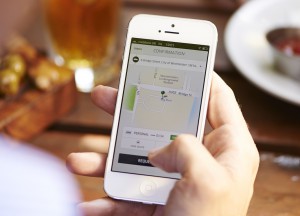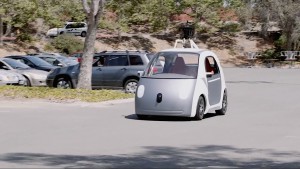
Uber's enjoying a successful run in the ride-sharing market, but a new foe may be on the horizon: Google.
Millions of Americans have begun turning to ride-sharing programs such as Uber and Lyft, not only as an alternative to traditional taxis but for some customers as a substitute for even owning a car.
Ride-share leader Uber has attracted not only a lot of new customers but, with an estimated valuation of $40 billion, it has drawn in plenty of big investors, including Google which has poured in more than $258 million in cash. But those erstwhile allies could soon by going head-to-head.
“Google is preparing to offer its own ride-hailing service, most likely in conjunction with its long-in-development driverless car project,” reports Bloomberg.
The news service cites insiders who have seen a prototype ride-sharing app being developed by the Silicon Valley tech giant which could be used to summon the fully autonomous vehicles Google recently began fleet testing near its California headquarters.
That would pose a potentially serious challenge to Uber, Lyft and the other ride-sharing services that have been flooding into the market lately. But it’s by no means the only obstacle. These start-ups have faced a fair bit of legal trouble, including lawsuits from drivers, and taxi and public transportation competitors – along with a number of government regulators – trying to get the ride-share companies banned.
But that has barely slowed the growth of the new business. And Google’s potential entry into the field actually could give ride-sharing new momentum.
Google clearly sees an opportunity. It was one of the earlier investors in Uber, its Google Ventures arm pumping in $258 million in August 2013, then expanding the investment a year later, Google’s chief legal officer, David Drummond, joining Uber’s board of directors.
Now Uber is considering asking Drummond to step down, according to Bloomberg, because his position on the board could pose a conflict if Google starts its own ride-sharing service.
Google apparently would like to leapfrog the current ride-share model which calls for private vehicle owners to serve as contract drivers.
(Google has no plans to go into the carmaking business. For more, Click Here.)
“The Uber experience is expensive because it’s not just the car but the other dude in the car,” Uber CEO Travis Kalanick said during a 2014 technology conference, indicating Uber would like to find a way to switch to autonomous vehicles. “When there’s no other dude in the car, the cost (of riding with Uber) gets cheaper than owning a vehicle.”
That would seem to suggest that Uber might actually be able to expand its ties with Google. After all, the tech giant has been in the forefront of developing autonomous vehicle technology. It is currently rolling out about 100 self-driving prototypes produced by Michigan supplier Rousch. Early versions will have conventional controls, but later Google cars will come without steering wheel and pedals.
(Click Here for details about why a self-driving car isn’t a great idea in a snowstorm.)
The vehicles will be used around the company’s HQ, but could expand to actually go into commercial operation if Google were to gain regulatory approval – something not yet assured.
As TheDetroitBureau.com reported last month, Chris Umson, who heads the company’s autonomous vehicle program, said Google does not actually plan to build its own self-driving cars for sale to the public, but would like to find existing automakers to partner with. That would suggest that a nationwide rollout of an autonomous vehicle ride-sharing program – rather than just a regional pilot – might be years off.
(To see more about the willingness of Americans to buy an autonomous vehicle, Click Here.)
And there are a variety of technical hurdles, as TheDetroitBureau.com is today reporting, that could limit the use of autonomous technology in inclement weather conditions, experts cautioning that full autonomy, capable of completely replacing the human driver at all times, may be further away than proponents would suggest.
Nonetheless, Google has the cash and the drive that could lead it to enter the ride-sharing field with more conventional, driver-operated vehicles while it works to get its autonomous technology ready for prime time.

